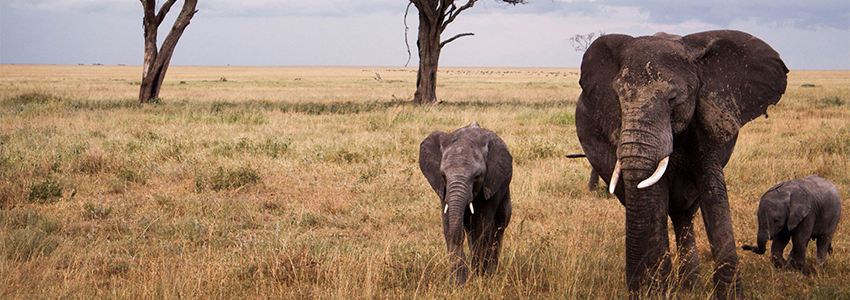
Overview
From Africa’s highest mountain, Kilimanjaro (5895 mts, 19,158 ft), to sandy white beaches, coarl reefs and off shore islands.The wide open plains of the Serengeti National Park, where the famous wildebeest migration begins and ends, the Selous and Ruaha National Parks in the south, the Rufiji River, and the fresh water lakes in the west. Lake Victoria, the source of the Nile river and the largest lake in Africa, which shares its shores with Kenya and Uganda, and Lake Tanganika, teeming in tropical fish, is the 3rd deepest lake in the world, and shares its shores with Burundi, the Democratic Republic of the Congo and Zambia. Zanzibar Island, off the coast, steeped in history, with the narrow winding streets of Stone Town, fragrant spices and glorious beaches.
The North – In the north of the counrty the “northern circuit” includes the best known of the national parks in Tanzania. Serengeti, Lake Manyara, the Ngorongoro Crater Conservation area, with the prehistoric site Olduvai Gorge, and Tarangire. All of which are popular tourist destinations and easy to visit. The are also the lesser known Mkomazi and Umba game reserves. The mountain parks, Mount Kilimanjaro and Arusha, with Mount Meru, offer climbing and trekking.
Central and southern parks There are seven parks and reserves in this large area.The two reasonably easy to access from Dar es Salaam by road are Mikumi National Park and Saadani National Park. The main attractions in the southern region are the Selous Game Reserve, one of Africa’s largest National Parks, and Ruaha National Park, which have an unspoiled atmosphere that reflect their remote locations. Visiting these parks is easiest by air, flying into the lodge airstrips, otherwise long journeys by road from Dar es Salaam are required. Western parks The parks in the west include two famous chimpazee sanctuaries, Gombe Stream National Park and Mahale Mountains National Park situated on Lake Tanganyika.
Access to both of these parks involves flying into an airstrip and a boat trip. The other parks in ths area are very remote and do not have accommodation for tourists
When to go :
Tanzania has much to offer all year round. Situated just south of the equator, temperatures average between 25-30C�. Humidity can be very high along the coastal strip and on Zanzibar but much lower in the interior highlands. There long rains are from March to May and short rains between October and December. In addition there are frequently heavy rains in the south of Tanzania from December until April.
The wildebeest migration in the Serengeti occurs in June and July. If you are planning a trekking or climbing holiday the best months are May to September. Travelling by road, especially in the more remote areas or through the national parks.It is easier during the dry months, as road conditions deteriorate significantly in the rain. There is an average of 4-6 hours of sunshine each day.
Visas
Visa are required by all visitors except citizens of the Commonwealth (excluding citizens of the UK, Australia, Canada, India and Nigeria who do require visas).It is straight forward to obtain a visas at the point of entry (border crossing or airport). Please note that requirement may change at any time, and check with your agent at time of booking.
Health
We recommend anti malarial profilactics, especially if you are visiying the coast and during the wet seasons when malaria is more prolific.For more infomation on health issues please consult your doctor.
Language
The official language is Swahili, which is spoken by everyone. Most places on the tourist routes English will be
